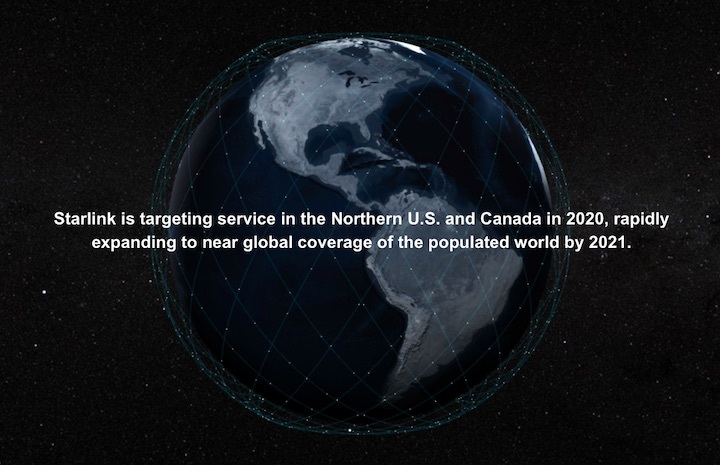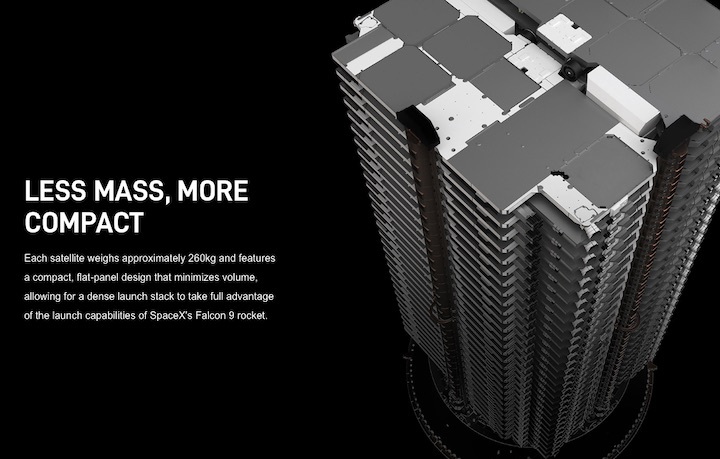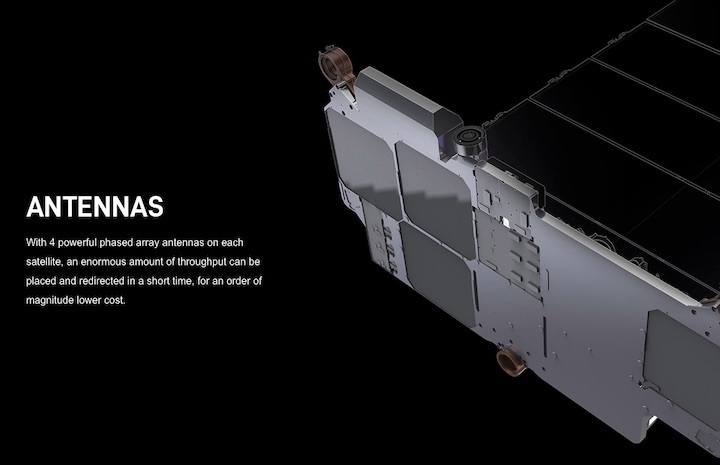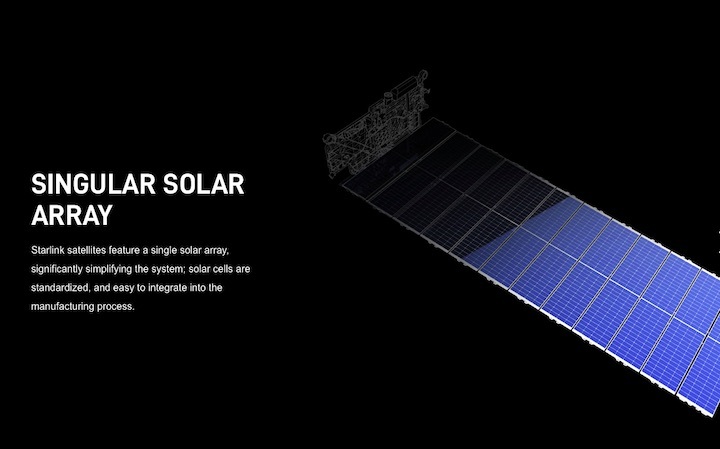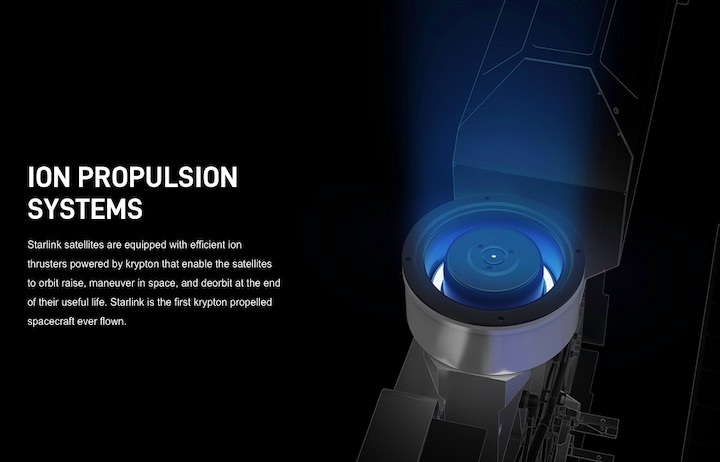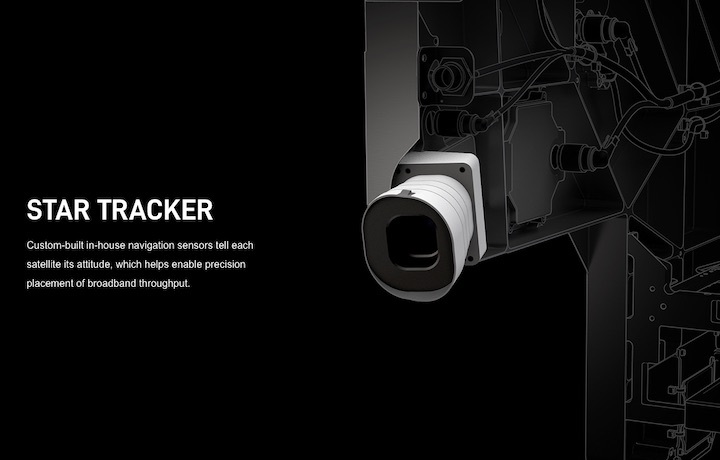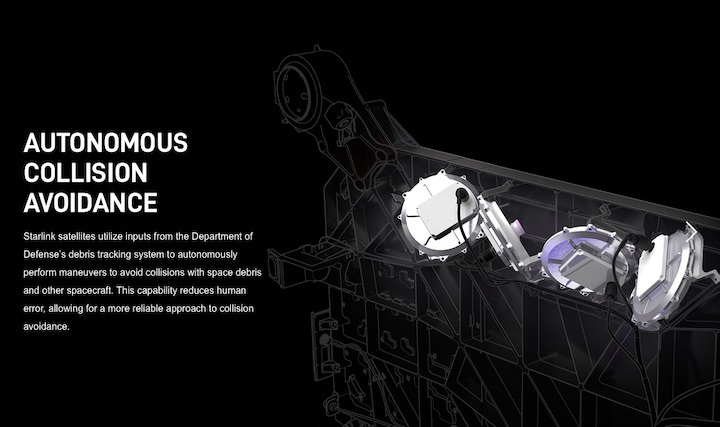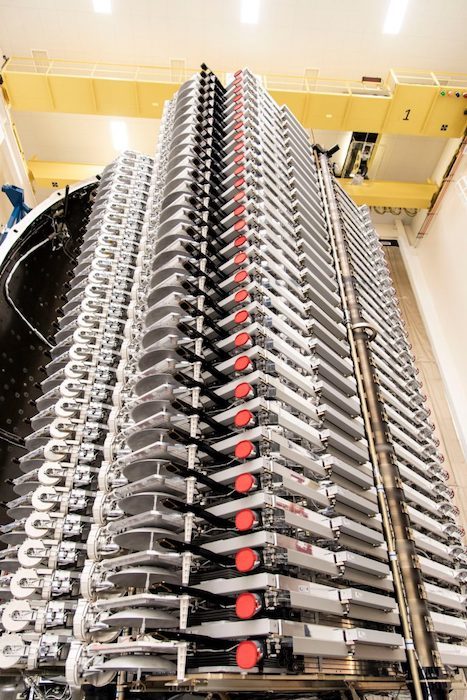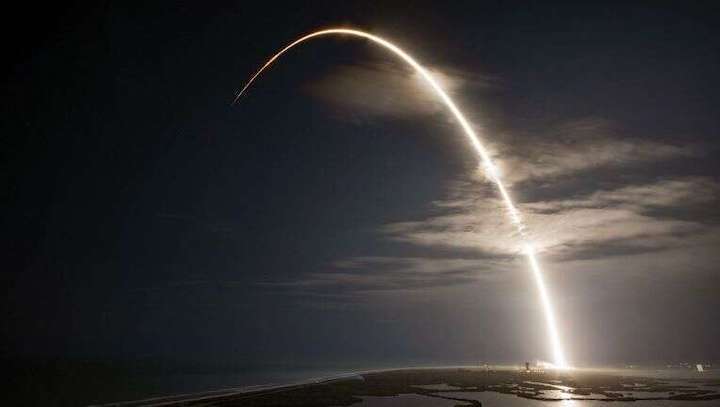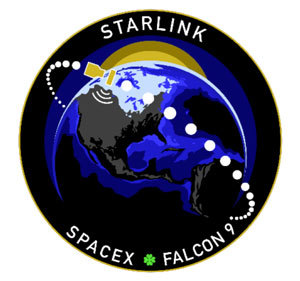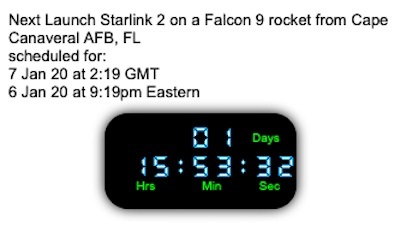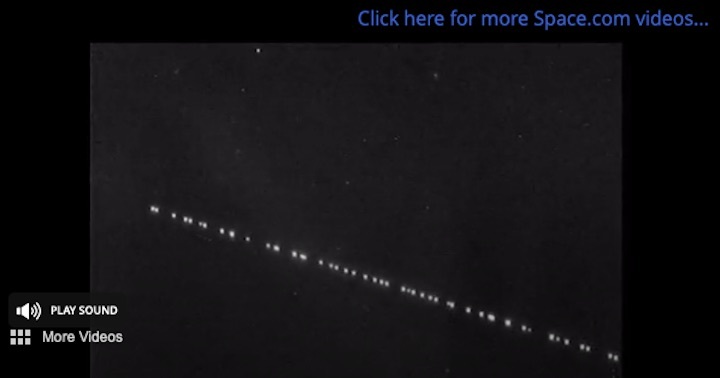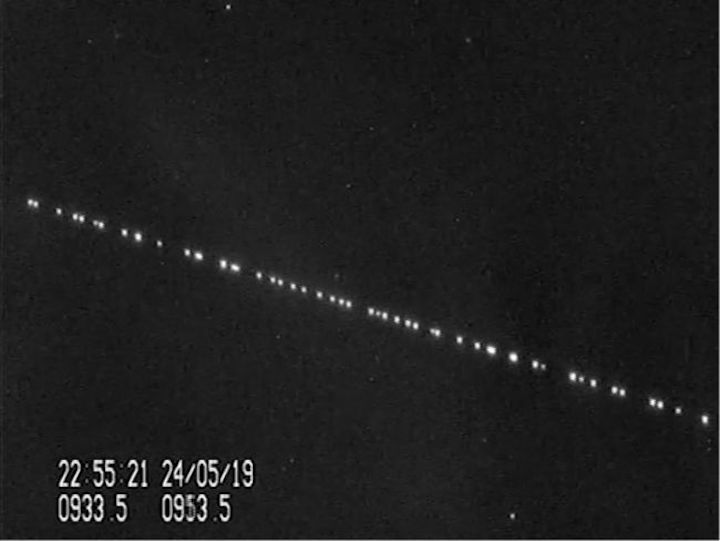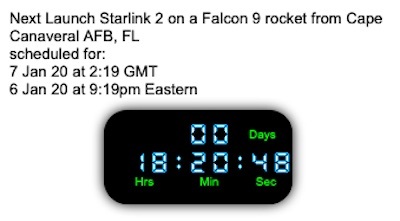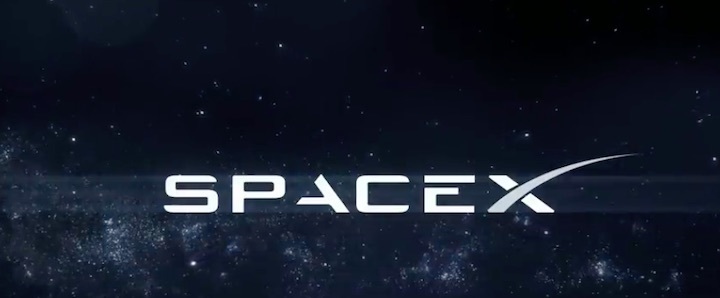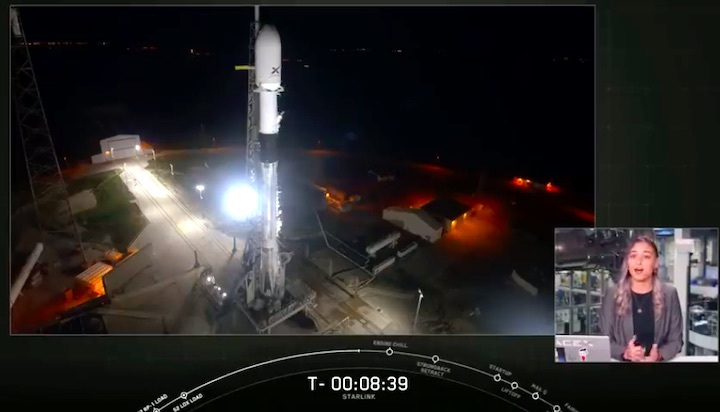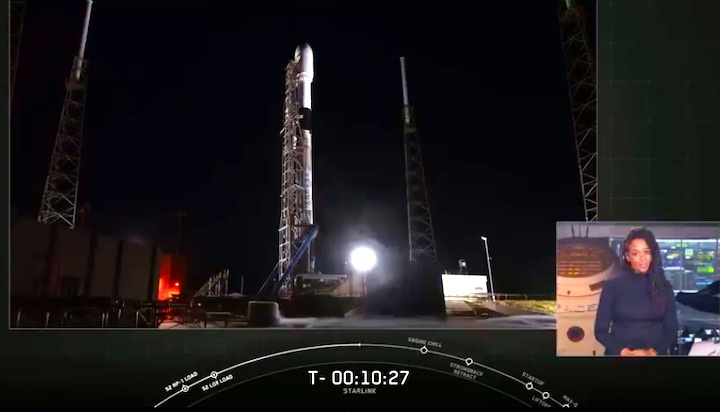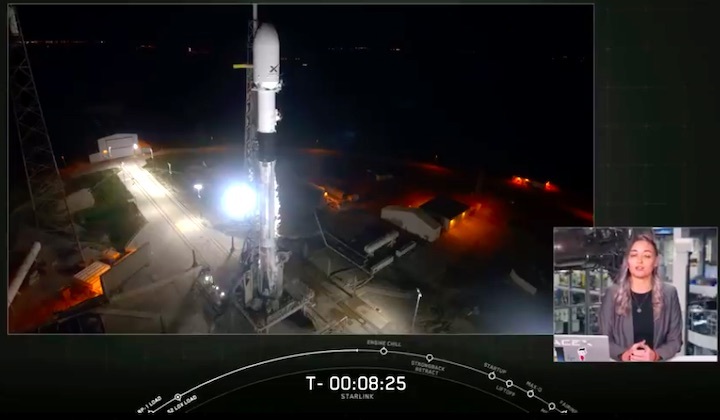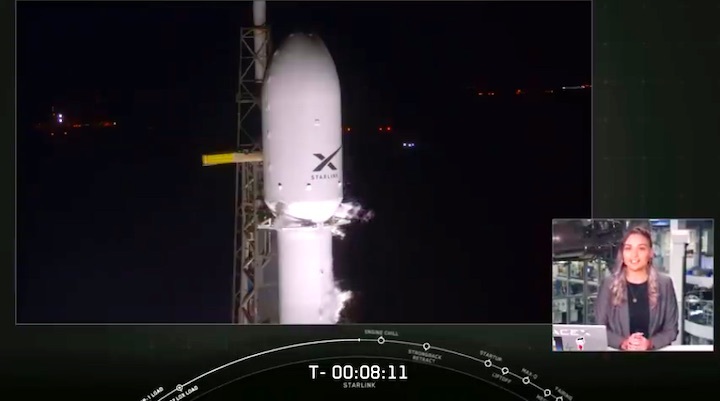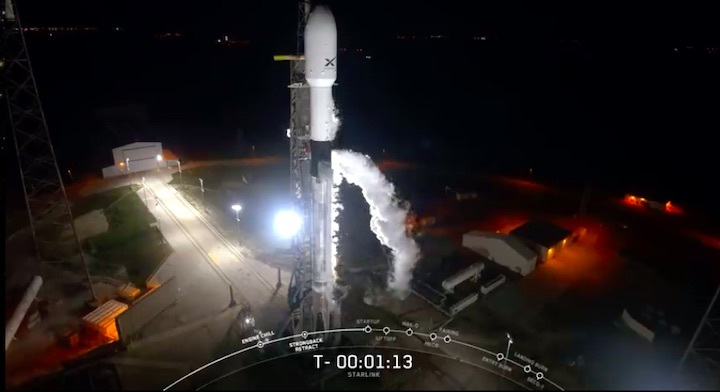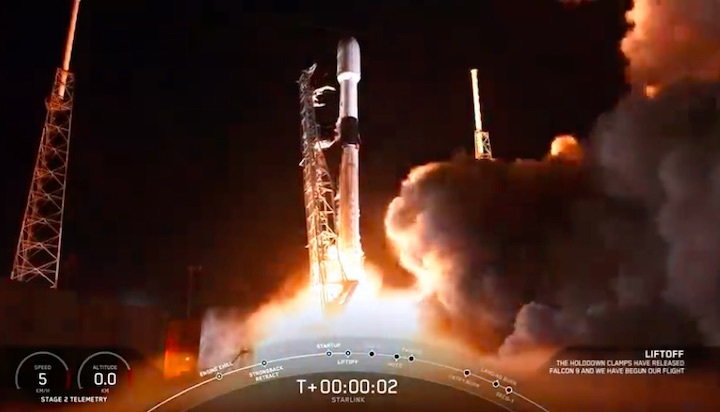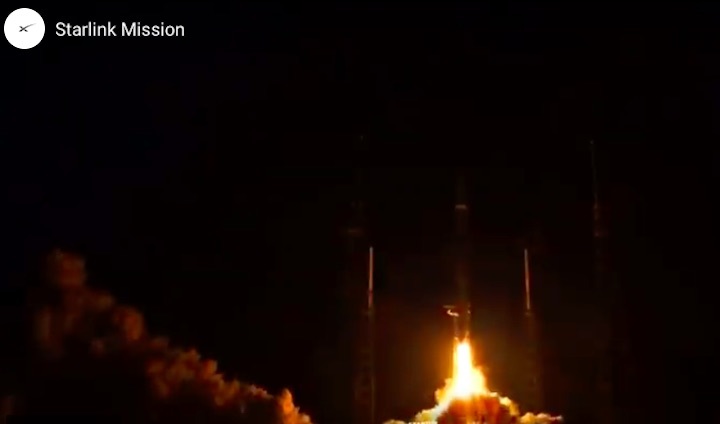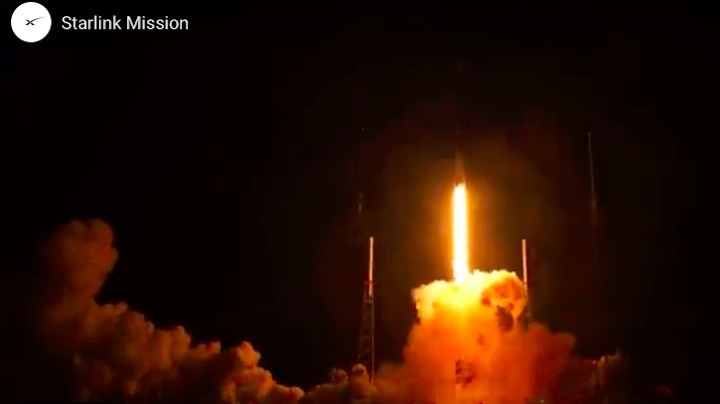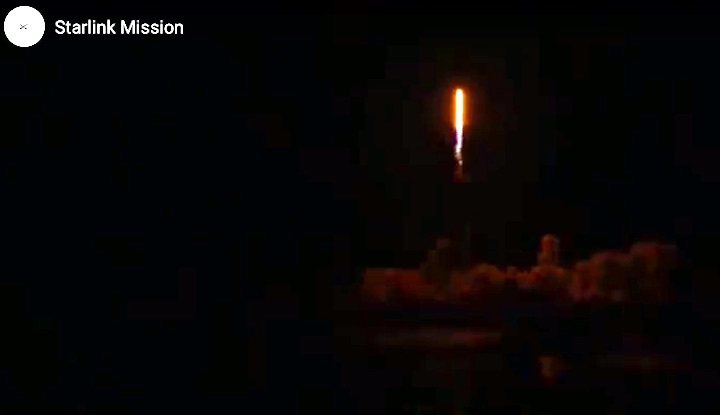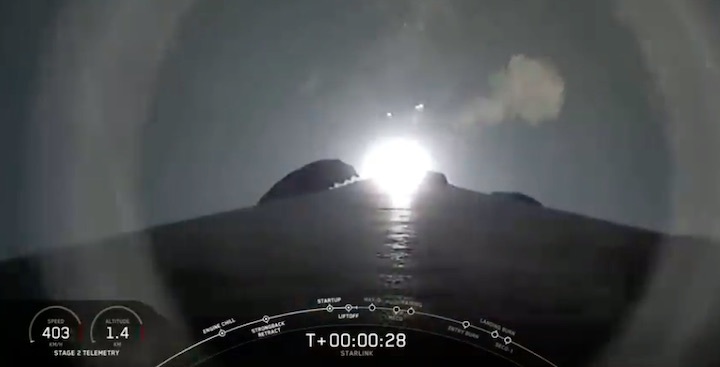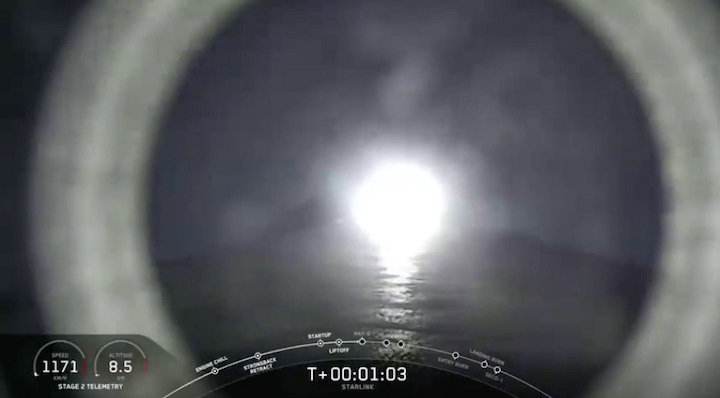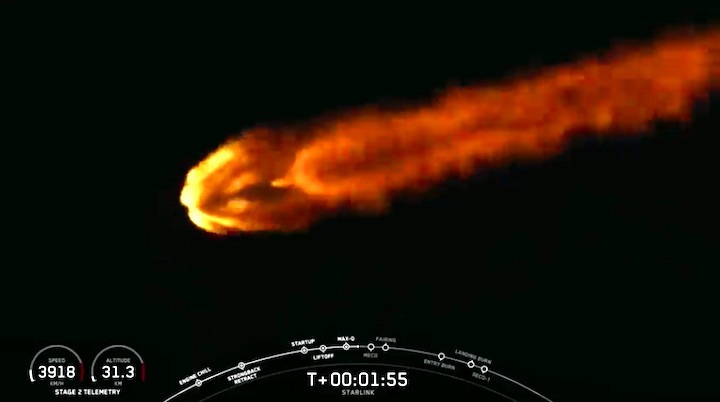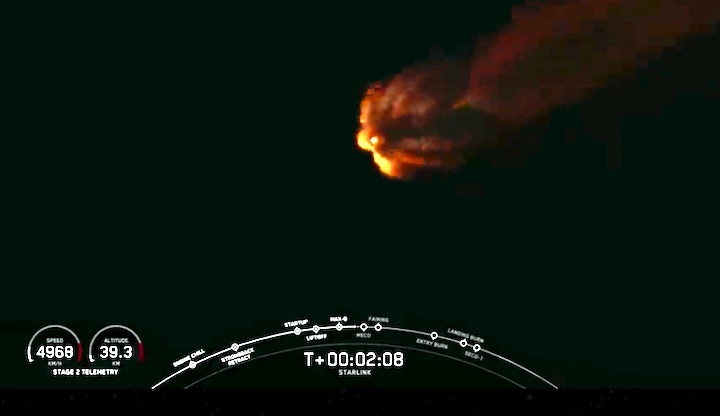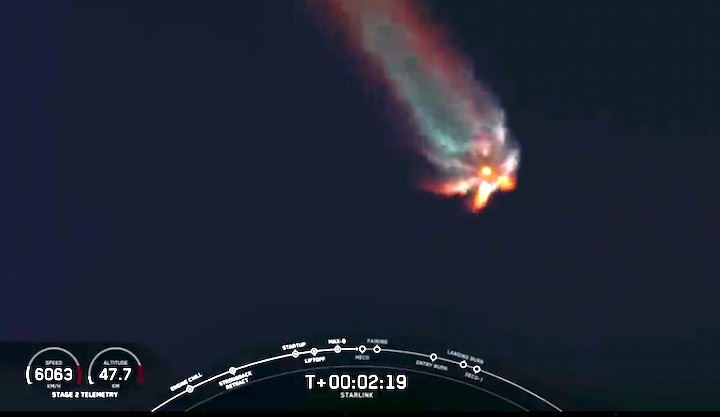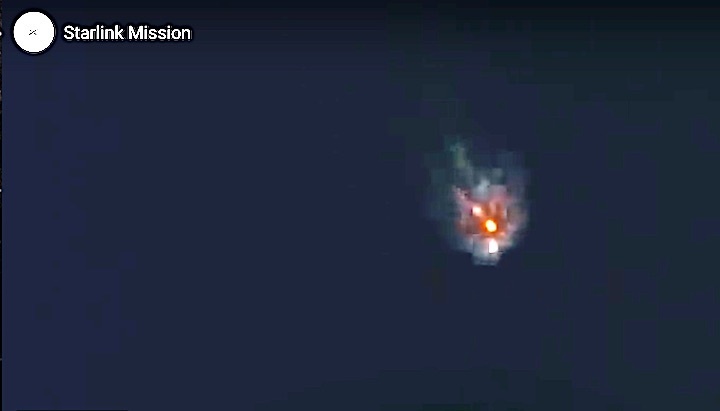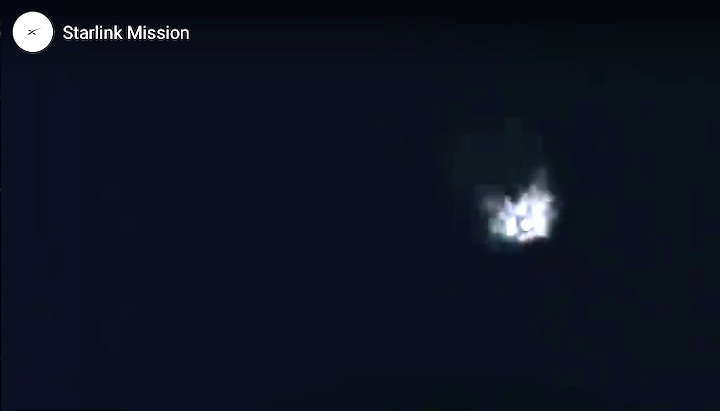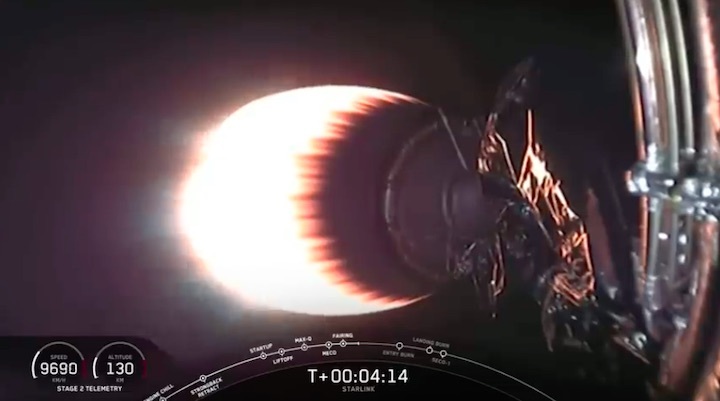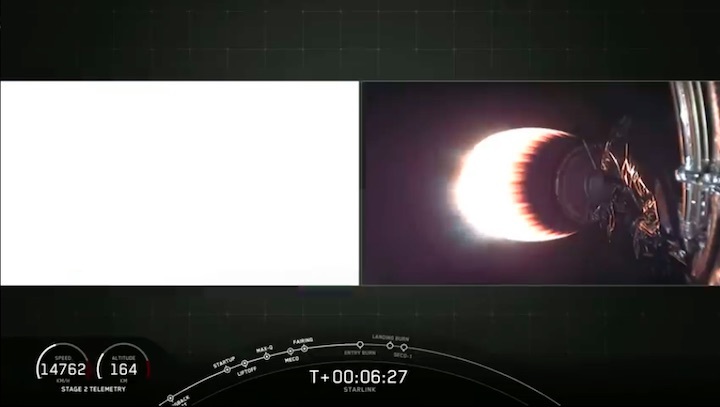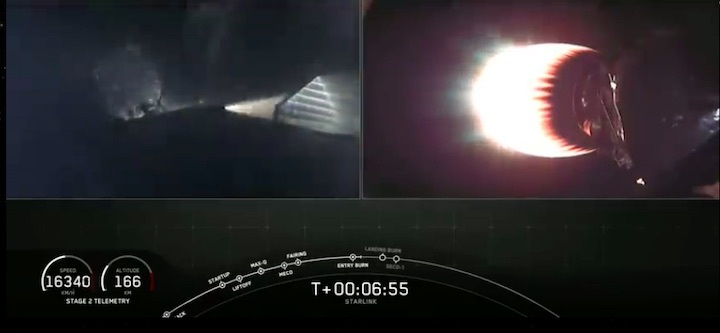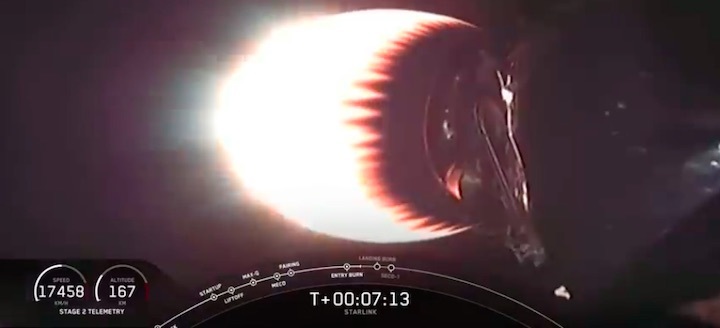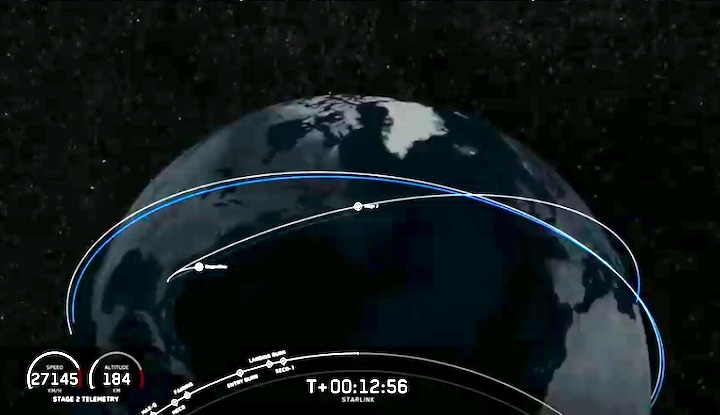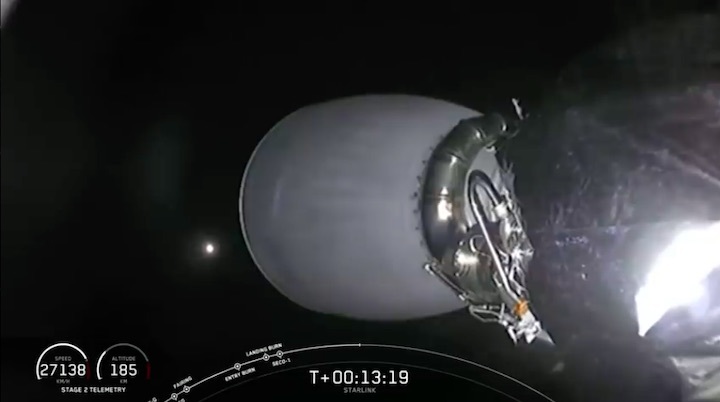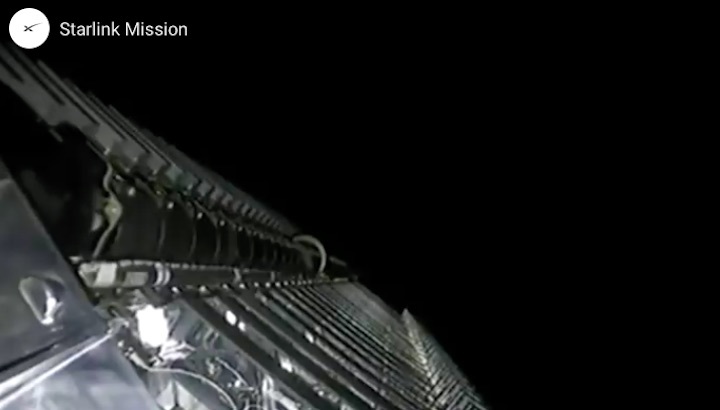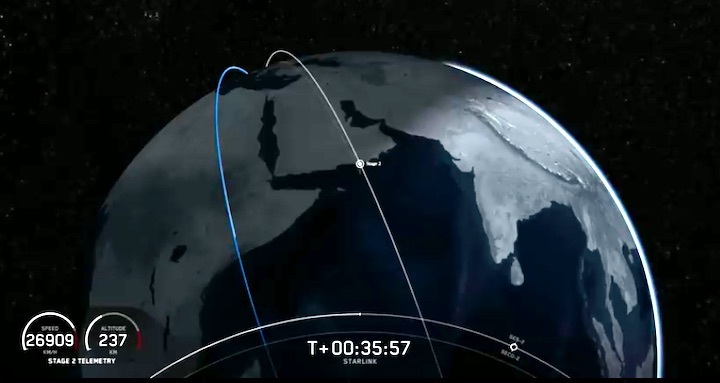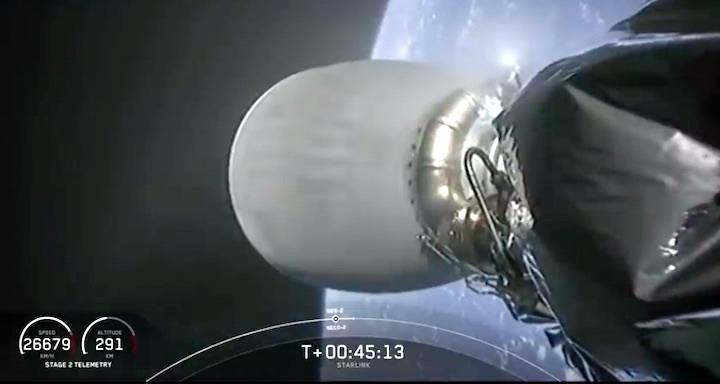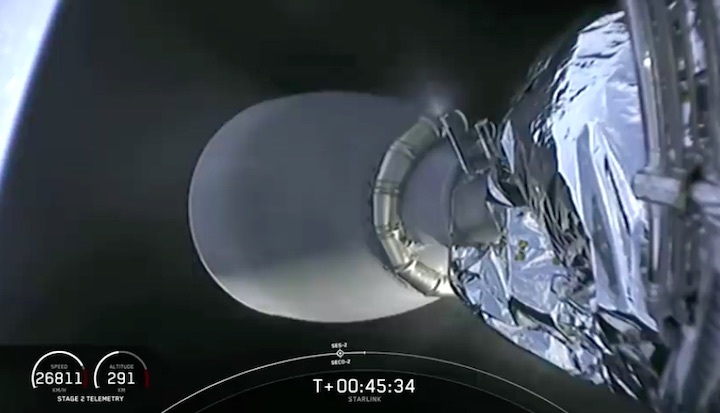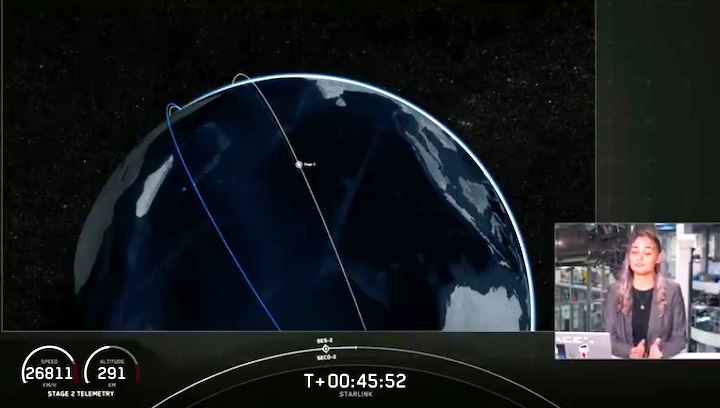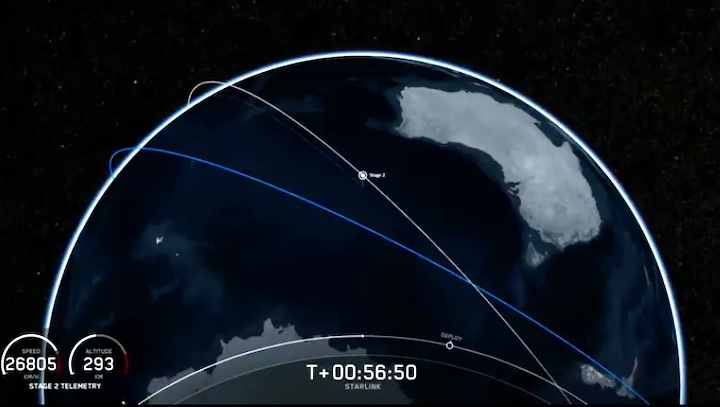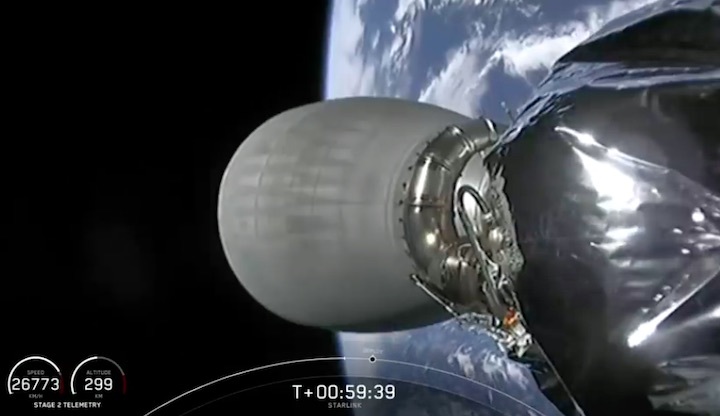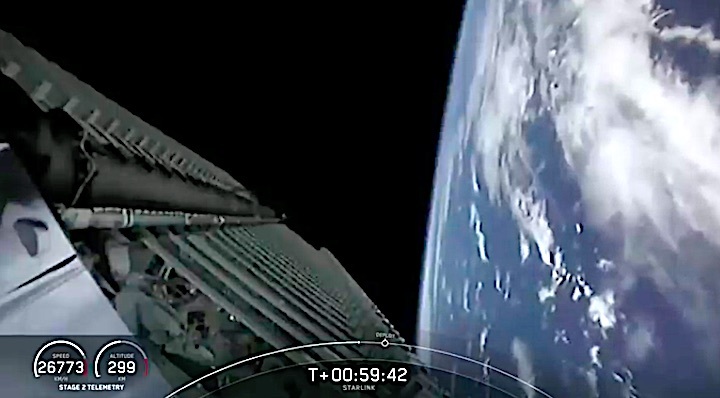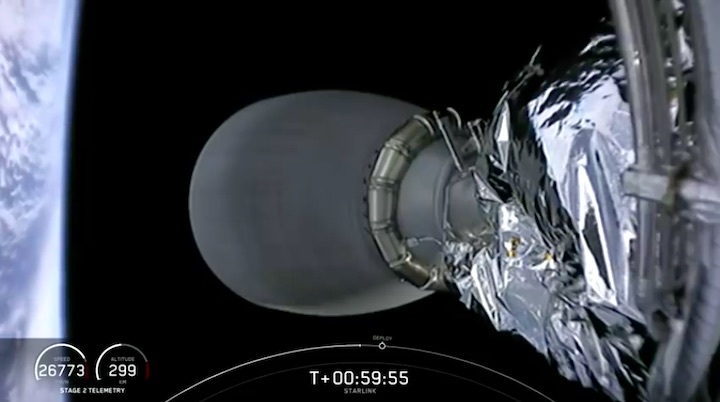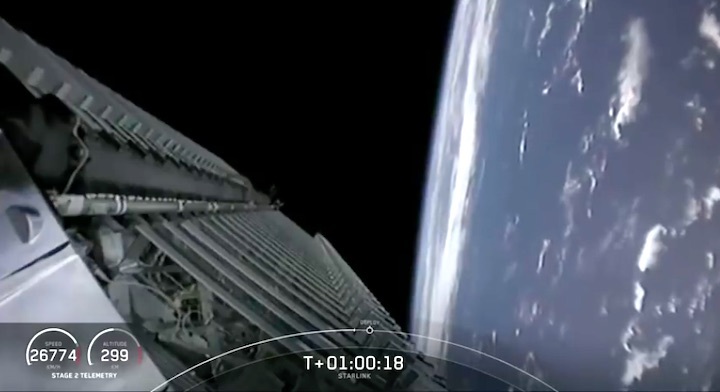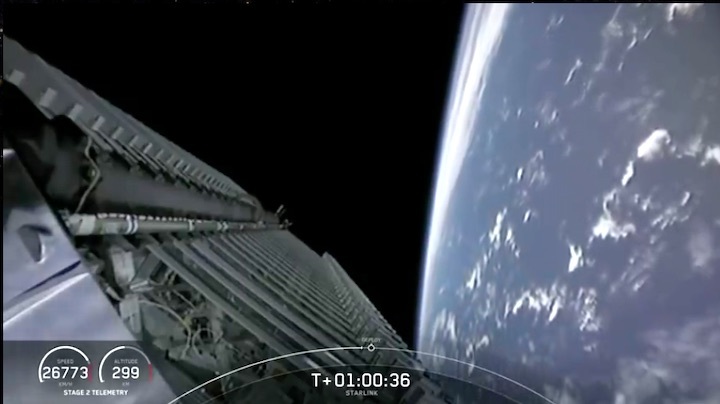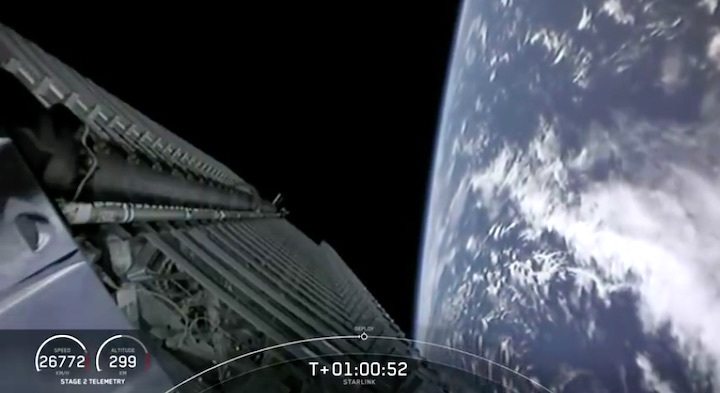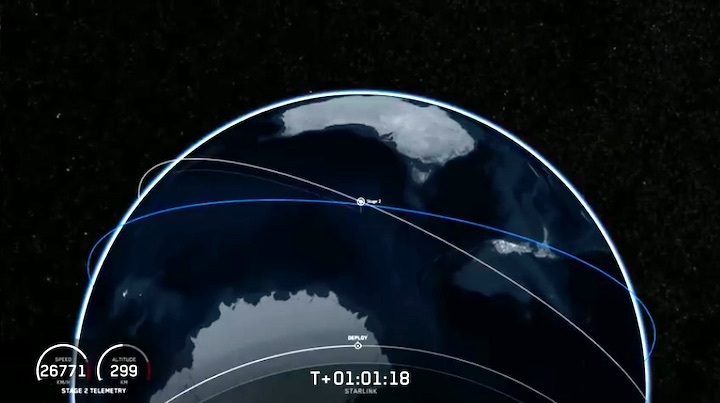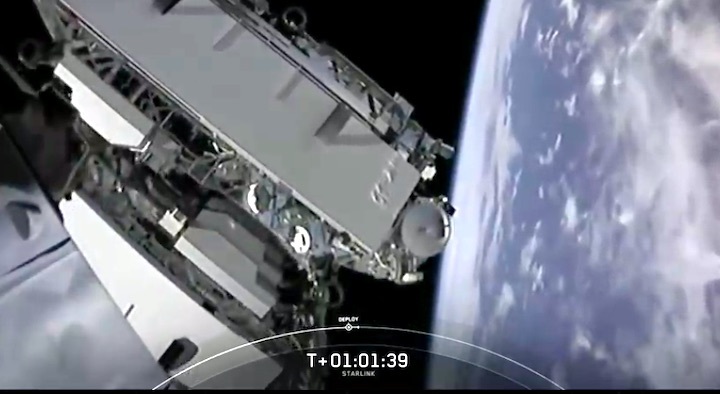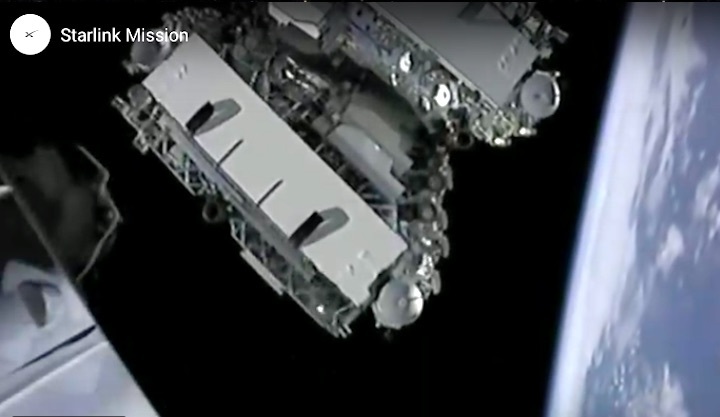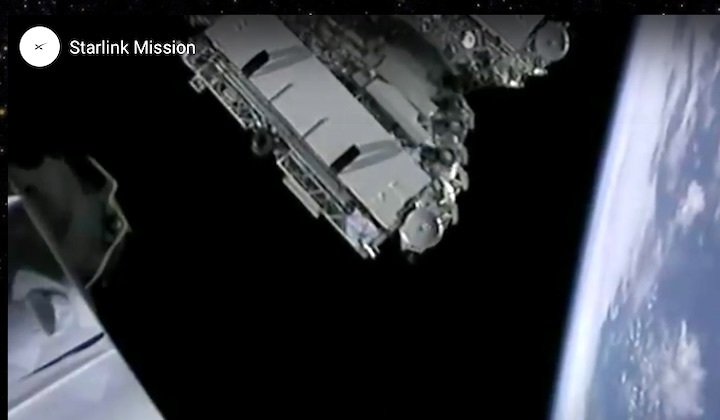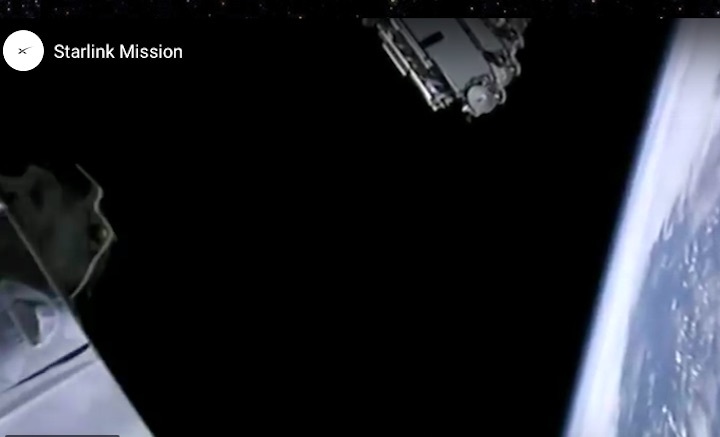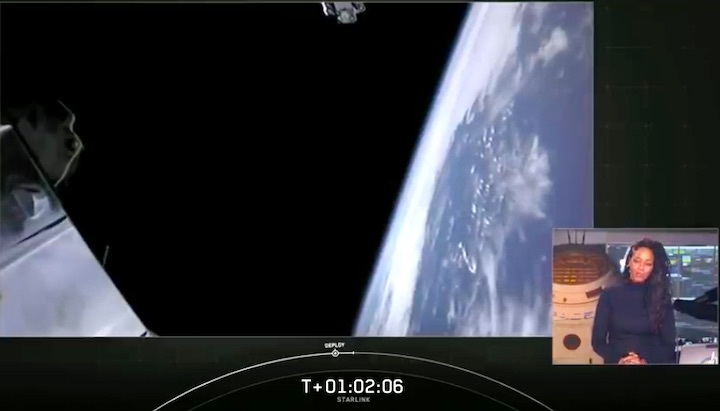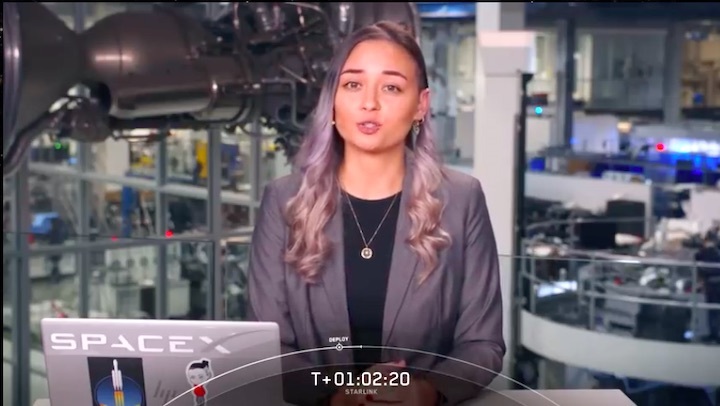12.12.2019
SpaceX to experiment with less-reflective satellite coatings on next Starlink launch for Jan.3
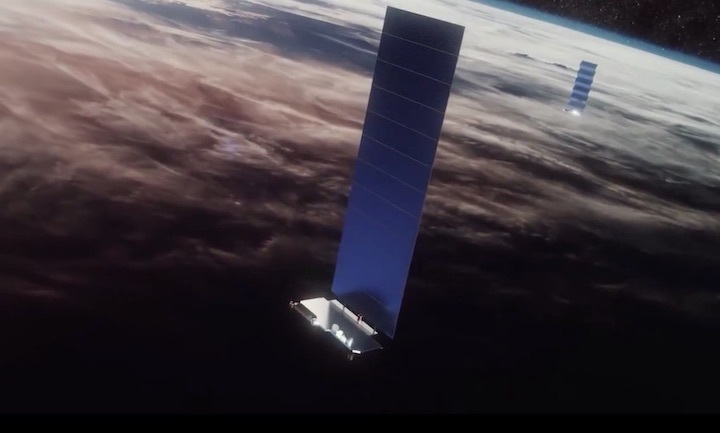
SpaceX’s next launch of satellites for the company’s Starlink broadband network — planned in the final days of 2019 — will carry one spacecraft with an experimental coating designed to make it less reflective in orbit, a first step in assuaging concerns from scientists who say the deployment of thousands more Starlink stations would impede some astronomical observations.
Gwynne Shotwell, SpaceX’s president and chief operating officer, told reporters Friday that the company wants to do “the right thing” and ensure the night sky remains accessible for scientific observations and inspiration.
SpaceX’s next Falcon 9 rocket launch dedicated to the Starlink network is scheduled in late December, roughly two weeks after the company launches the next Falcon 9 mission on its manifest. That mission, slated to carry a commercial geostationary telecom satellite, is planned for no earlier than Monday, Dec. 16.
The Starlink launch in late December will carry 60 new satellites to join 120 other Starlink data relay nodes launched on two previous missions in May and November.
The Starlink satellites launched earlier this year traced paths across morning and evening twilight skies. The spacecraft were deployed from their Falcon 9 launchers in tight bunches, and were more reflective than expected, appearing to fly overhead in train-like formations before spreading out in the days and weeks after each launch.
Before spreading out and raising their orbits using ion thrusters, the Starlink satellites sometimes flared to become as luminous as the brightest stars in the sky. The flat-panel satellites are relatively small, with a deployable solar panel, and weigh around 573 pounds (260 kilograms) at launch, according to SpaceX.
Responding to astronomers’ protests, SpaceX said earlier this year it would take steps to make the bottom of each Starlink satellite less reflective. The 60 satellites launched in November did not have such a change, but one of the 60 spacecraft scheduled for launch in late December will have a modification to address the brightness concerns.
“This next batch has one satellite that we’ve put a coating on the bottom,” Shotwell said Friday in a meeting with reporters at SpaceX headquarters in Hawthorne, California. “This is going to be an experiment … We’re going to do trial and error to figure out what’s the best way to get this done. But we are going to get it done.”
Shotwell said the Starlink satellites for the late December launch have been delivered to Cape Canaveral from the Starlink factory in Redmond, Washington, for final launch preparations.
“Astronomy is one of a few things that gets little kids excited about space,” Shotwell said. “There are a lot of adults that get excited, too, who either depend on it for their living or for entertainment. But we want to make sure we do the right thing, to make sure little kids can look through their telescopes. It’d be cool for them to see a Starlink. I think that’s cool. But they should be looking at Saturn and the moon.”

Before committing to further satellite changes, Shotwell said SpaceX wants to make sure the coating works. SpaceX also wants to ensure the coating change does not adversely affect the performance of the satellite, such as its thermal properties.
“That’s why we can’t just say we’re just going to do this thing,” she said. “It also has to work.”
Shotwell said SpaceX was surprised that the Starlink satellites were so reflective after the first launch in May.
“There are lots of people that have looked at Starlink and looked at the satellites, lots of people knew what we were doing, and no one thought of this,” she said. “We didn’t think of it. The astronomy community didn’t think of it. It happened … Let’s go figure that out.”
SpaceX has approval from the Federal Communications Commission to launch and operate up to 12,000 Starlink satellites in the coming years. The company’s initial Starlink fleet will number 1,584 satellites to enable global Internet services, and SpaceX’s broadband network could approach that number of spacecraft with a series of up to two dozen Falcon 9/Starlink launches in 2020.
The American Astronomical Society has established a working group to connect the astronomical scientific community and SpaceX, the AAS said in a written update posted Dec. 5 on its website.
“The response from our community was loud enough that SpaceX reached out to the AAS looking to establish a line of communication,” wrote Kelsie Krafton, a publicly policy fellow at the American Astronomical Society. “Since optical/infrared interference doesn’t have a statutory or regulatory framework like radio interference, they hadn’t had any interactions with that part of our community.”
Krafton wrote that SpaceX and the AAS have discussed the Starlink brightness issue on eight telecons since June. The astronomy advocacy group says it has met with satellite industry representatives, congressional staff, federal officials and members of the space law community.
“Things are moving in a hopeful direction after our last two telecons,” Krafton wrote. “SpaceX is willing to test coatings to see if that helps bring down the brightness.”
Krafton wrote that astronomers are aiming to select a brightness level for SpaceX to target for their Starlink satellites. Simulations are also underway to model the Starlink satellites’ impacts to ground-based astronomical observatories, and astronomers have discussed the best way for SpaceX to disseminate their launch schedules to allow scientists to take measures to avoid observations that might be impacted by Starlink satellites, according to Krafton’s post on the AAS website.
Astronomers want to make sure observations planned by the Large Synoptic Survey Telescope, or LSST, remain unimpeded by satellite constellations planned by SpaceX, OneWeb, Amazon and other companies.
Funded by the U.S. government, the LSST is under construction in Chile and is designed to capture deep, wide-field images of the entire available sky, allowing astronomers to learn more about dark energy and dark matter, and detect potentially hazardous asteroids with orbits near Earth, among other objectives.
Members of the LSST science team said last month that, assuming the full deployment of SpaceX’s Starlink satellites, nearly every exposure from the observatory within two hours of sunset or sunrise would have a satellite streak. During summer months, when twilight times longer, there could be a 40 percent impact on twilight observing time, according to the Association of Universities for Research in Astronomy, or AURA, which manages the LSST project for the National Science Foundation.
“Because of scattered light in the optics by the bright satellites, the scientific usefulness of an entire exposure can sometimes be negated,” AURA said in a statement last month. “Detection of near-Earth asteroids, normally surveyed for during twilight, would be particularly impacted. Dark energy surveys are also sensitive to the satellites because of streaks caused in the images. Avoiding saturation of streaks is vital.”
“The goal of Starlink is to provide worldwide internet service, an aspiration we do not want to impede, but this requires one to two orders of magnitude more low Earth orbiting satellites than currently exist,” Krafton wrote. “We do not want to give up access to optical observations from the ground. Our group’s task is to find a path forward that accommodates both uses of the sky.”
Quelle: SN
----
Update: 18.12.2019
.
SpaceX launches lucky no. 13 for this year [Updated]
Fairing reuse, Starlink trains, and Starship testing marked big moments in 2019.
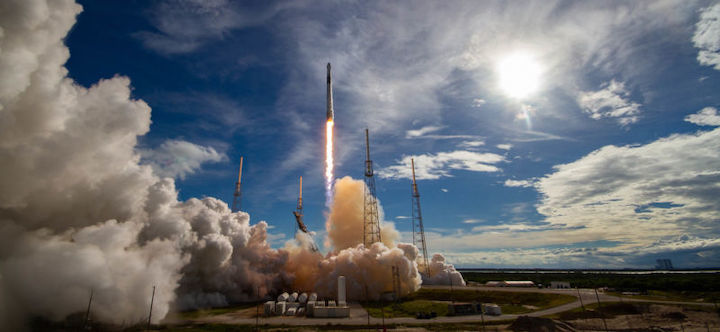
Starlink
SpaceX also got the jump on its broadband constellation competitors in 2019, with the launch of 120 Starlink Internet satellites over the course of two missions. These flights represented the vanguard of a fleet of more than 10,000 satellites in low-Earth orbit that will provide low-latency connectivity around much of the world and may set the company up to compete with traditional Internet service providers as early as 2020.
The company also stoked controversy among astronomers with its train of satellites, which were clearly visible immediately after launch, and as they raised their orbits. However, SpaceX has recognized those concerns, and company officials have said they will experiment with making the underside of the satellites darker so they are less disruptive to nighttime skies.
SpaceX has received the brunt of these criticisms as it is the first of several ventures each planning to launch hundreds to thousands of satellites into low-Earth orbit for broadband Internet service. It remains to be seen whether SpaceX can master the considerable technical challenges of providing seamless Internet from orbit, but the company now has two considerable advantages over its competitors—plenty of operational experience in space from 120 satellites, and a peerless, low-cost, reusable rocket.
It is possible that SpaceX will launch a third batch of 60 Starlink satellites at the very end of this month.
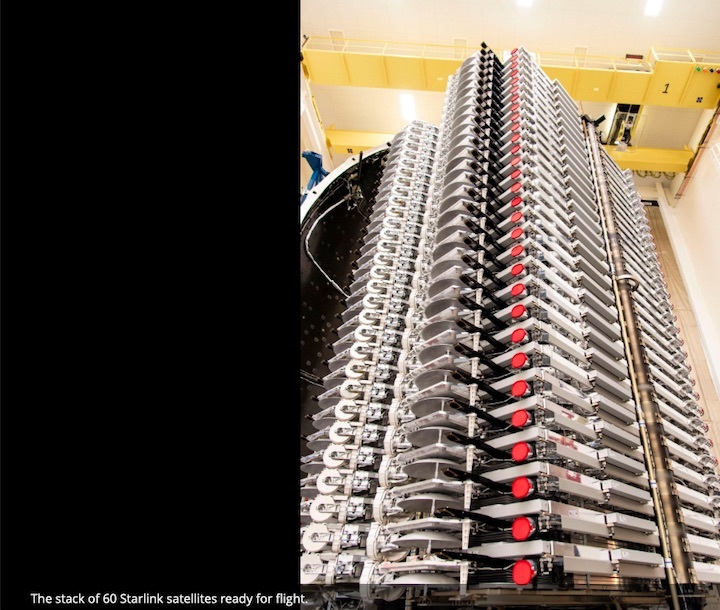
Quelle: ArsTechnica
----
Update: 21.12.2019
.
SpaceX poised to accelerate launch cadence with series of Starlink missions
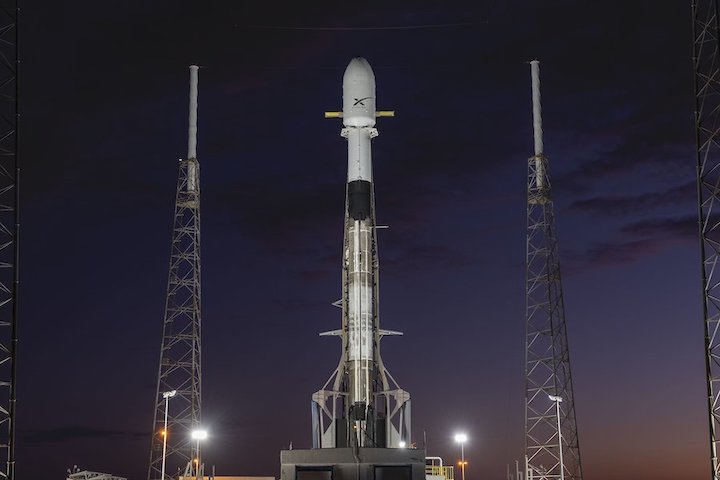
SpaceX teams across the United States are readying for what the company’s chief operating officer predicts will be a record number of launches in 2020.
Before the end of January, SpaceX aims to perform four Falcon 9 launches from Florida’s Space Coast — three for the company’s Starlink broadband network, and a crucial in-flight abort test for the Crew Dragon spacecraft no earlier than Jan. 11.
SpaceX has performed its final launch of 2019, finishing the year with 13 missions — 11 using the “single-stick” Falcon 9 and two employing the Falcon Heavy with three booster core connected together. All 13 of the missions were successful.
The company accomplished 21 launches in 2018, and 18 in 2017.
That adds up to 52 successful missions in a row — one of the longest-running success streaks in the global launch industry — since a Falcon 9 rocket exploded on the launch pad at Cape Canaveral during final preparations for a pre-flight test-firing in September 2016, damaging the launch complex and destroying an Israeli communications satellite.
Gwynne Shotwell, SpaceX’s president and chief operating officer, said the company is poised to launch a lot more rockets next year.
“I think in 2020 we’ll do more, and that’s because of Starlink,” she said in a roundtable discussion with reporters earlier this month. “I think we will have 14 or 15 non-Starlink launches, and then we’ll fly Starlink as often as we can.
“I need second stages to be built a little bit faster, but we would probably shoot for 35 to 38 missions next year,” Shotwell said.
Every Falcon 9 and Falcon Heavy launch needs a new second stage produced at SpaceX’s factory in Hawthorne, California. But many of SpaceX’s launches utilize reused first stage boosters. That eases pressure on production teams, SpaceX officials said.
The company says it plans to build around 10 new Falcon 9 first stages in Hawthorne next year. That’s down from around 16 to 18 new first stages that SpaceX manufactured a couple of years ago. The reduction in the booster build rate has allowed SpaceX to reassign engineers and technicians to other roles within the company, officials said.
The Crew Dragon’s abort test in January will utilize a Falcon 9 rocket launched from pad 39A at NASA’s Kennedy Space Center. Around a minute-and-a-half after launch, the Falcon 9’s Merlin first stage engines will shut down, and the Crew Dragon capsule will fire its SuperDraco abort thrusters to fire away from the top of the launch vehicle.
The high-altitude escape exercise will prove the capsule’s ability to safely carry its astronaut passengers away from an in-flight rocket failure before NASA clears the Crew Dragon to carry humans later in 2020. The Crew Dragon will parachute to a splashdown in the Atlantic Ocean off Florida’s east coast, where SpaceX teams will retrieve it and return it to port.
NASA is paying SpaceX more than $3 billion to develop, build and fly Crew Dragon spaceships to ferry crews to and from the International Space Station.
The in-flight abort test was previously scheduled for late December, then Jan. 4. The new target launch date of Jan. 11 is pending approval from the U.S. Air Force’s Eastern Range, according to NASA.
The Crew Dragon spacecraft SpaceX is preparing for the high-altitude abort test completed a series of engine hotfire tests on a stand at Cape Canaveral Air Force Station in November. The test-firings verified SpaceX’s fix for a valve issue that caused the explosion of a Crew Dragon capsule during a similar hotfire test in April.
Shotwell estimated the explosion of the Crew Dragon capsule in April alone caused three to four months of delay in SpaceX’s commercial crew program.
Up to 180 Starlink satellites will be launched on the next three Falcon 9 missions dedicated to building out a fleet orbiting relay stations for SpaceX’s planned global Internet service.
The next launch, scheduled for Jan. 3 at approximately 10:20 p.m. EST (0320 GMT on Jan. 4) from Cape Canaveral Air Force Station’s Complex 40 launch pad, will add around 60 satellites to the 120 spacecraft SpaceX has shot into orbit on two previous Falcon 9 missions in May and in November.
SpaceX plans to operate the initial block of 1,584 Starlink satellites in orbits 341 miles (550 kilometers) above Earth. The company, founded by billionaire Elon Musk, has regulatory approval from the Federal Communications Commission to eventually field a fleet of up to 12,000 small Starlink broadband stations.
SpaceX confirmed Thursday that it plans a Falcon 9/Starlink launch in late January from pad 40. The update followed similar announcements from SpaceX on the schedule for two preceding Starlink missions in late December and mid-January, both also from Complex 40.
The late December launch has been delayed to Jan. 3.
Shotwell had predicted SpaceX would perform more than 13 launches in 2019, but some of the missions were delayed.
“I think the only ones we delayed are a couple of Starlinks, and then crew,” Shotwell said. “For the first time, we’re waiting for our customers, which is a much happier place for us to be.”
Shotwell’s forecast of SpaceX’s 2020 launch manifest presumes the company can launch a Starlink mission as often as twice per month, each with up to 60 satellites.
“Production on Starlink is going really well,” she said earlier this month in a meeting with reporters at SpaceX’s headquarters in Hawthorne, California. “I think the next flight (set) was shipped to the Cape. We build roughly seven satellites … Starting into the new year, you should see a mission every two-to-three weeks from us. We will hold a Starlink mission for a customer launch. But that should be roughly the cadence.”
The flat-panel Starlink satellites, built at a SpaceX facility in Redmond, Washington, fill the volume of the Falcon 9’s payload fairing. Each satellite weighs around 573 pounds, or 260 kilograms, and the Starlink craft stacked together form the heaviest payload SpaceX has ever launched.
Highlights of SpaceX’s planned 2020 launch schedule include the Crew Dragon’s first mission with astronauts, scheduled as soon as the first quarter of the year. NASA astronauts Bob Behnken and Doug Hurley will fly aboard the Crew Dragon to the International Space Station after launching on a Falcon 9 rocket from pad 39A at the Kennedy Space Center in Florida.
In late 2020, SpaceX plans to launch its fourth Falcon Heavy rocket from pad 39A at the Kennedy Space Center with a U.S. Air Force payload. For that mission, designated AFSPC-44, the Falcon Heavy will target a high-altitude circular geosynchronous orbit more than 22,000 miles (nearly 36,000 kilometers) above Earth.
SpaceX also plans to launch two Dragon cargo missions from Cape Canaveral to the space station in 2020 — in March and August — and two Air Force GPS navigation satellites are slated to ride Falcon 9 rockets into orbit from Florida’s Space Coast in March and July.
An Argentinian radar observation satellite named SAOCOM 1B is scheduled for launch in March from Cape Canaveral on top of a Falcon 9 rocket. That mission, targeting a polar sun-synchronous orbit, was moved from Vandenberg Air Force Base and will be the first polar orbit launch from Florida since 1960.
SpaceX launches at Vandenberg will resume in November 2020, when a joint U.S.-European oceanography satellite named Sentinel 6A will lift off from the California launch base on a Falcon 9 rocket.
SpaceX’s busiest month of launches ever is just around the corner
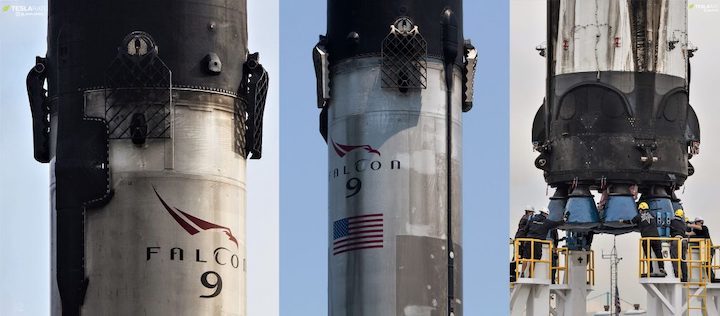
With the turn of the new year, SpaceX has just entered what could become the busiest few weeks of Falcon 9 launches in the company’s history, breaking previous records for the most launches it has performed in a single month.
As of now, SpaceX is already scheduled to perform the first orbital and suborbital launches of 2020 – a definite sign of things to come if the company’s plans hold firm over the next 12 months. First up is Starlink-2, SpaceX’s third 60-satellite launch and second launch of upgraded Starlink v1.0 spacecraft, scheduled to launch no earlier than January 6th after a recent three-day delay.
Perhaps less than five days after that orbital launch attempt, SpaceX and NASA have scheduled Crew Dragon’s In-Flight Abort (IFA) test around 8 am ET (13:00 UTC), January 11th – set to be the spacecraft’s second launch on Falcon 9. Even then, that’s just the first half of SpaceX’s planned January 2020 launch manifest, potentially paving the way for a new internal record if schedules don’t slip.
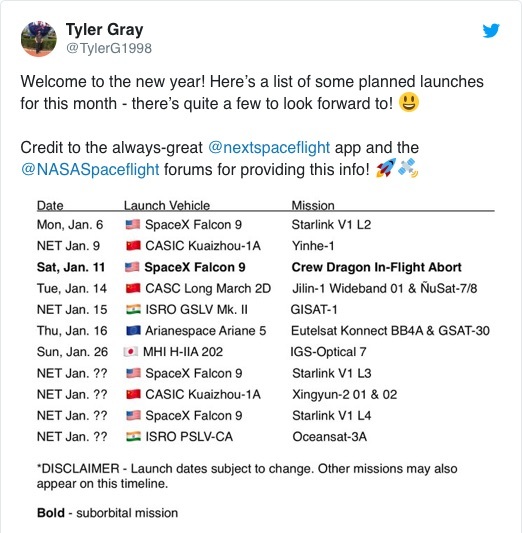
In the nine and a half years Falcon 9 has been operational, SpaceX has averaged a bit less than 1.5 launches per month. However, the company only truly came into its own as a launch provider in 2017 and has since launched an impressive 52 orbital launches, meaning that almost 69% of the Falcon family’s launches have been completed in less than 36 months – a period representing just 30% of its operational life.
In those last three exceptionally busy years, averaging more than 17 launches annually, SpaceX has had only three instances where it launched three Falcon 9s in the same month – June 2017, October 2017, and December 2018.
On top of Starlink-2 and Crew Dragon’s IFA test, SpaceX has two additional 60-satellite Starlink v1.0 launches scheduled this month – Starlink-3 in mid-January and Starlink-4 near the end of the month. Especially in light of Starlink-2’s delays from December 30th to January 3rd and finally January 6th, it will be a challenge for Starlink-4 to remain in January, but there is definitely a chance.
While Crew Dragon’s In-Flight Abort test is suborbital, SpaceX would still set a record for the number of Falcon (9) launches performed in a single month if it can launch all four aforementioned missions in January 2020. In fact, given that Starlink-2 is now scheduled to launch no earlier than January 6th, SpaceX will actually need to launch a rocket every ~6 days to complete its tentative manifest – an impressive feat that would translate to more than 60 launches annually if extended throughout 2020.
Although nearly impossible if SpaceX is only able to rely on its Cape Canaveral Air Force Station (CCAFS) LC-40 pad for commercial launches, such a cadence might actually be well within reach if SpaceX can supplement LC-40 with a monthly or bimonthly launch from its Kennedy Space Center LC-39A pad. Primarily meant to support Crew Dragon, Cargo Dragon 2, and Falcon Heavy launches, Pad 39A nevertheless can and did host numerous Falcon 9 satellite launches in 2017, and some recent FCC filings indicate that SpaceX is considering additional commercial launches from 39A in 2020.
In fact, including Crew Dragon’s IFA and a Falcon Heavy launch for the USAF scheduled in late-2020, Pad 39A is already scheduled to support as many as five launches for NASA and the Air Force. If, say, SpaceX schedules and additional five commercial Falcon 9 missions from Pad 39A in 2020, LC-40 can get away with one Falcon 9 launch every two weeks – already well within reach as long as the rockets and payloads are ready.
SpaceX currently has plans to launch as many as 36-38 separate orbital missions in 2020, a number that perfectly aligns with the possibility of a few commercial missions launching from Pad 39A this year. In short, SpaceX is on track to potentially kick off 2020 with its busiest month of rocket launches ever – a perfect sign of the company’s equally ambitious plans for the rest of the year.
Quelle: TESLARATI
----
Update: 3.01.2020
.
SpaceX now targeting new date for Starlink launch from Cape Canaveral

